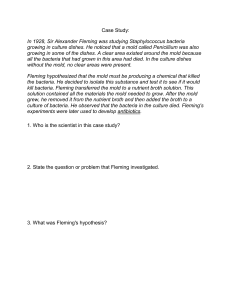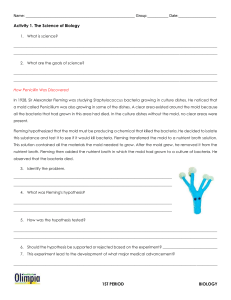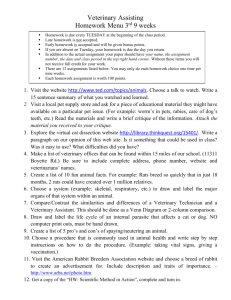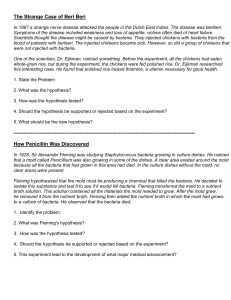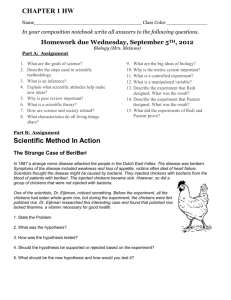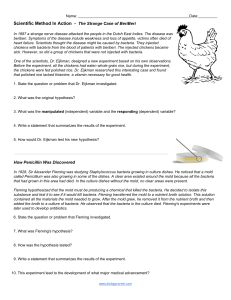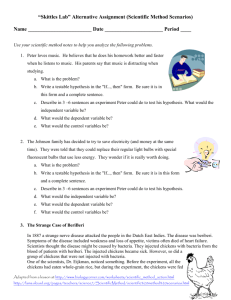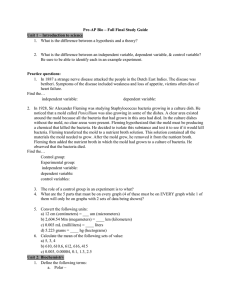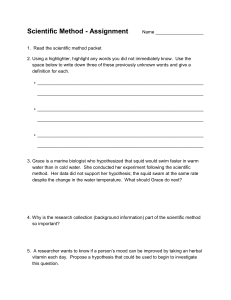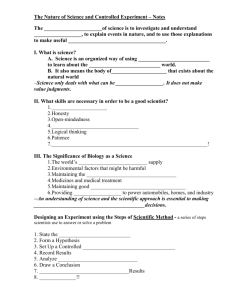Experimental Design Practice Worksheet
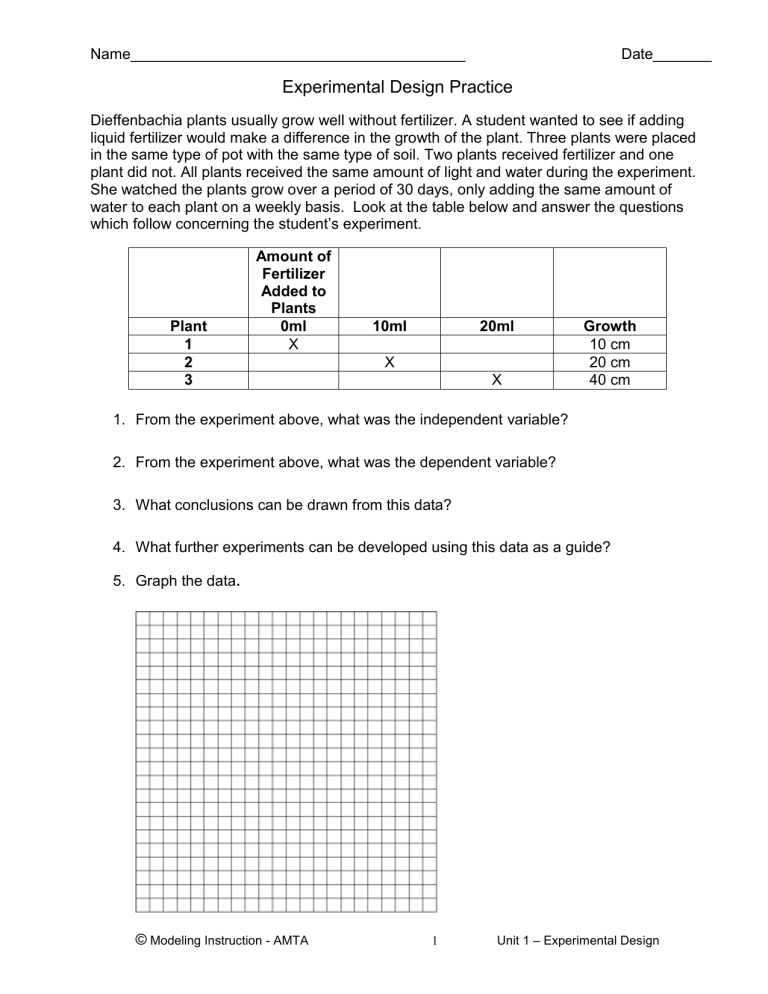
Name________________________________________ Date_______
Experimental Design Practice
Dieffenbachia plants usually grow well without fertilizer. A student wanted to see if adding liquid fertilizer would make a difference in the growth of the plant. Three plants were placed in the same type of pot with the same type of soil. Two plants received fertilizer and one plant did not. All plants received the same amount of light and water during the experiment.
She watched the plants grow over a period of 30 days, only adding the same amount of water to each plant on a weekly basis. Look at the table below and answer the questions which follow concerning the student’s experiment.
Plant
1
2
3
Amount of
Fertilizer
Added to
Plants
0ml
X
10ml
X
20ml
X
Growth
10 cm
20 cm
40 cm
1. From the experiment above, what was the independent variable?
2. From the experiment above, what was the dependent variable?
3. What conclusions can be drawn from this data?
4. What further experiments can be developed using this data as a guide?
5. Graph the data .
©
Modeling Instruction - AMTA 1 Unit 1 – Experimental Design
Name________________________________________ Date_______
Experimental Design Practice
Study the diagram below to answer the next 2 questions.
6. What is a possible question for this set up?
7. What is a possible hypothesis for this set up?
8. The fish in an aquarium swim to the top when the light is turned on. Develop a hypothesis to explain this behavior and design an experiment to test the hypothesis.
9. A number of rats are divided into two groups: One group is fed a normal diet, whereas the other group is fed the same diet but with one necessary mineral left out.
The animals receiving the normal diet remained healthy; those in the other group grew weaker. Formulate a hypothesis based on this experiment.
©
Modeling Instruction - AMTA 2 Unit 1 – Experimental Design
Name________________________________________ Date_______
Experimental Design Practice
In 1928, Sir Alexander Fleming was studying Staphylococcus bacteria growing in culture dishes. He noticed that a mold called Penicillium was also growing in some of the dishes. A clear area existed around the mold because all the bacteria that had grown in this area had died. In the culture dishes without the mold, no clear areas were present.
Fleming hypothesized that the mold must be producing a chemical that killed the bacteria.
He decided to isolate this substance and test it to see if it would kill bacteria. Fleming transferred the mold to a nutrient broth solution. This solution contained all the materials the mold needed to grow. After the mold grew, he removed it from the nutrient broth. Fleming then added the nutrient broth in which the mold had grown to a culture of bacteria. He observed that the bacteria died.
10. How was the hypothesis tested?
11. Should the hypothesis be supported or rejected based on the experiment? Explain your reasoning.
©
Modeling Instruction - AMTA 3 Unit 1 – Experimental Design
